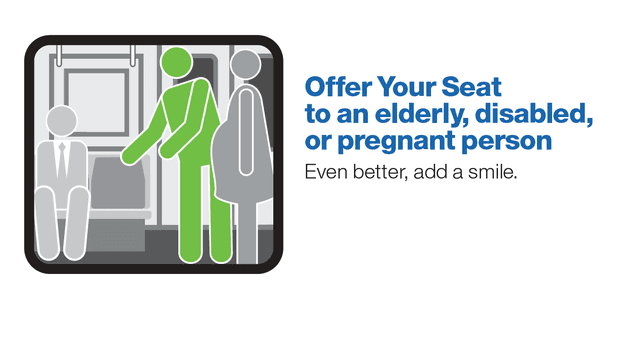For a pregnant, working woman in New York, life can gradually become an unending series of headaches the farther along she gets in her pregnancy. I speak from the personal experience of carrying two pregnancies while living in Brooklyn and working in Manhattan.
Sometimes you feel like a minority being pregnant in this city of more than 8.4 million people, since only about 22 percent of New Yorkers are under 18 and 75 percent of households don’t include children of any age, according to U.S. Census data. Unfortunately, the census doesn’t track unborn children.
Surprisingly, most American metropolitan centers have even lower percentages of child residents, including Washington, D.C.; Seattle, San Francisco, Atlanta, and Chicago. Residents in many of those cities are more likely to use cars, though. Not the case in New York City, where more than 5 million people ride the city’s trains every day.
The various pitfalls of a daily commute by train for a pregnant woman are mildly entertaining—as long as you don’t have to live through it.
The First Trimester
The life of a pregnant woman in her first trimester can be … nauseating. Literally. Dr. Jennifer Niebyl, head of obstetrics and gynecology at University of Iowa College of Medicine, tells WebMD that as many as 90 percent of pregnant women have some degree of nausea or vomiting, usually in the first three months.
With this in mind, imagine getting up and ready for work, going to the train, and then going up and down stairs to train platforms. Among the city’s 468 train stations, there are only 217 elevators and 176 escalators, according to the New York State Comptroller’s Office. They are frequently broken or in serious disrepair. The heightened sense of smell which occurs with most pregnancies coupled with nausea makes riding in a subway elevator that smells of urine (yes, you read that right) one of life’s most unpleasant experiences. That’s if you’re “lucky” enough to live or work near a station with one. I don’t.
Those precious few escalators and elevators are often in the same station, and often in Manhattan, where the cost of living is exponentially higher than almost everywhere else in the city.
Once on the train, an expectant mother faces the prospect of a rocking, rolling train that makes sudden, frequent stops. Sometimes conductors will take a sharp turn at a fast clip, sending passengers leaning unnaturally far off the handrails.




